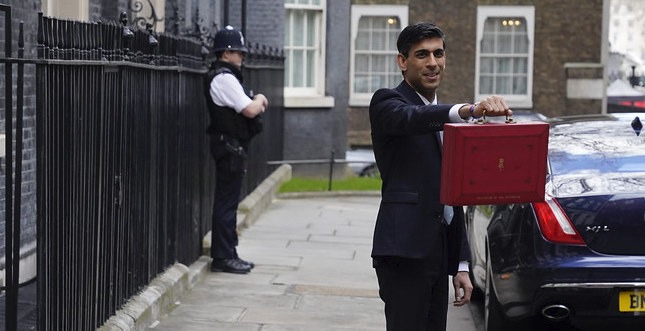
The chancellor offered the country a £30bn spending spree. Adrian Jenkins notes that local government can expect to benefit from capital investment though uncertainty hangs over business rates as a long-term source of funding.
Rishi Sunak’s first budget as chancellor has provided us with clear signals that this government is prepared to spend its way out of trouble and to deliver its manifesto pledges.
In the short term, this means spending as much as is necessary to deal with the coronavirus outbreak. But in the medium term, the chancellor’s plans show that he will spend and invest more than his predecessors were willing (or able) to. Indeed, the Office for Budget Responsibility characterised the budget as “the largest sustained fiscal loosening since the pre-election budget of 1992”.
Keep in touch – register for Room151 treasury and finance meetings ONLINE
For now, the government’s fiscal rules will remain unchanged. Current spending will have to be balanced by 2022-23 (the third year of the forecasting period) and, on current plans, this will be achieved with headroom of £12bn.
Increases in public spending have been funded by increases in the tax-take, principally by reversing the cut in corporation tax that was due to start in April 2020. The real fiscal expansion is in capital investment, where the government will spend right up to its maximum threshold (3% of GDP).
The chancellor heralds this increase as the highest level of capital investment in real terms since 1955. In fact, public sector net investment exceeded 3% of GDP in every year between 1951 and 1977-78, though it hasn’t done so since. So, this government’s capital investment plans are high compared to recent years but not when compared to the early post-war period.
Uncertainty
For local government, our funding prospects are improving but our ability to plan effectively for the future is hampered by uncertainty.
The good news first. Overall spending on day-to-day services is going to increase more quickly than we had expected. Spending will increase by an average of 2.8% over the next spending review period (2021-22 to 2023-24).
And it is likely that some of these elevated growth projections will find their way through to “unprotected” services—including local government.
Based on estimates from the Institute for Government, funding for “unprotected” services will grow by about 1.7% per year in real terms over the 2020 comprehensive spending review (CSR). This is not quite as large as 2020-21 but much higher than any year in the previous decade.
To see how much of this funding finds its way through to local government we will have to wait until the 2020 CSR, which will be announced in July this year. As ever, the horse-trading will see council tax used to offset some of the increases in funding from the national taxpayer.
It is, however, difficult to see the government increasing funding for social care at a lower rate than in recent years. Over the last five years, social care funding has increased by an average of £700m per year: Equivalent to a 3% increase in overall government funding.
Business rates
The future of business rates as a source of income looks less and less certain. Once again, the government has taken chunks out of the sector’s tax base, by effectively removing all small businesses from the tax (those with a rateable value of less than £51,000).
Whilst the cost of the new and extended discounts will be fully funded by the government, the yield from business rates comes from an ever-narrowing range of businesses.
To add to the uncertainty around business rates, another review has been launched. Some of the objectives are focussed on improving the way that business rates work (putting business rates “on a more sustainable footing” by improving how transitional relief functions, how to set the multiplier, and whether alternative reliefs are required).
But more fundamental changes are certainly within scope: The review will address whether open market rentals are the most suitable basis for a business tax and whether there are alternatives to the current business rates system.
For now, local authorities can assume that the business rates retention scheme will continue for another five years at least, though the long-term viability of business rates as a tax to fund local government looks doubtful.
Capital investment
Increases in capital investment is where the new chancellor has really loosened the purse strings, spending up to 3% of GDP. Local government can expect to share in some of this largesse.
There are some early indications of the capital funding for local government. A £2.5bn potholes fund has been announced, a popular policy for the government. We assume the distribution will mirror the £400m roads funding in 2018-19, of which three-quarters goes to county authorities.
Wait and see
There will be five-year transport funding for mayoral combined authorities (£4.2bn), as well as funding for the Transforming Cities fund, the Affordable Homes Programme, and new city and growth deals.
This is a genuinely expansionist budget, with much improved prospects for local government. Nothing is certain yet, though, and local authorities’ ability to plan will continue to be hampered by uncertainty.
Funding allocations will emerge in the early Summer. But we will have to wait longer for the outcome of the Fair Funding Review and other changes in funding for 2021-22.
Until then, we wait to find out how much of the national fiscal expansion will find its way through to local government.
Adrian Jenkins leads the funding advisory service at Pixel Financial Management.












